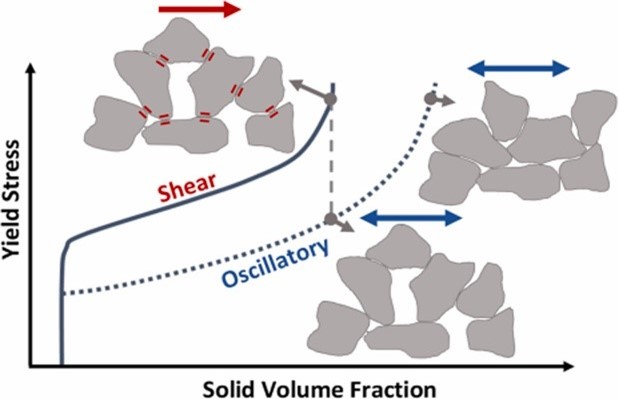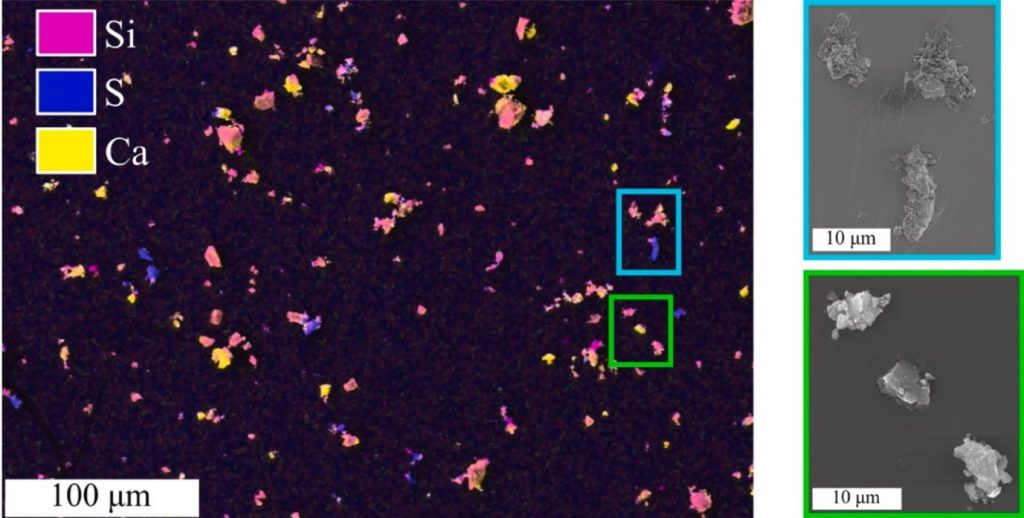How can we help you?
Please get in contact with us to find out more about ECFP and whether we can help you.
Concrete is essential in modern construction and is the most abundant manufactured material on earth, with 30 billion tons used each year. However, the production of concrete’s key component, cement, is responsible for 8% of global CO2 emissions. This value readily demonstrates cement usage has to be reduced, and alternatives sought. In a recently published article in Powder Technology (available open access), ECFP researchers have revealed how friction between microscopic cement grains can prevent the easy flow of fresh, unset concrete. Improving our understanding of these microscale processes will guide efforts to replace cement with more sustainable substitutes.

Concrete is produced by mixing various solids, such as cement, sand and gravel, with water to form a dense suspension, which then sets to form a durable solid. Prior to setting, the flow characteristics of fresh concrete allows it to be manipulated, poured, extruded, and cast to form an extensive range of construction products. To successfully develop sustainable cement replacements, it is crucial to understand how such replacements affect concrete’s rheology, and ensure any novel, low-carbon concrete can still be readily manipulated in its fresh state to form the wide range of products that are essential in modern-day construction.

While sliding friction has long been known to be important for the larger sand and gravel components, cement powder is much smaller, on average half the width of a human hair. Here attractive surface forces such as those that keep emulsion paint stable in a tin, were thought to be most important. By comparing oscillatory flow, where the sample is gently ‘vibrated’, and steady shear, where particles are pushed into each other (first image above from Richards et al. (2024) CC BY 4.0), researchers, including Dr James Richards and undergraduate summer student Hao Li, demonstrated how a paste of cement and water becomes much thicker as particles come into compressive frictional contact.
These frictional interactions could influence how the concrete sets after flow, and how the cement interacts with large aggregates in the mixture. They also have an effect on the maximum packing fraction and how it relates to the particle size. This is particularly relevant for formulation design and optimisation of cement alternatives and admixtures (substances added to concrete to introduce additional beneficial properties e.g., concrete that sets more quickly).
These experiments show a striking similarity between cement and simpler model systems, as well as other real-life systems including chocolate! This is despite the chemical complexity of the cement system studied, as shown in an elemental map from energy dispersive X-ray spectroscopy that highlights the many components (image above). This map was produced using the Cryo-SEM facility available at the School of Physics and Astronomy.
However, not all cement replacements may blend together quite so well, a research topic being pursued by ECFP’s Dr Rory O’Neill. For example, whilst all components of a typical Portland-cement-based blend are of a similar size, some replacements may be on the nanoscale. In model systems previously studied by the University of Edinburgh’s Dr John Royer, this can cause surprising effects, such as separation and a complete loss of a connected gel network as a system is slowly vs rapidly stirred (see Phys. Rev. Lett. 128, 248002). Understanding how replacements of this size affect the system’s structure and rheology is therefore essential to incorporating them into existing concrete formulations.
Please get in contact with us to find out more about ECFP and whether we can help you.
ECFP delivers fundamental product insight enabling improved formulation and processing for a more sustainable future.